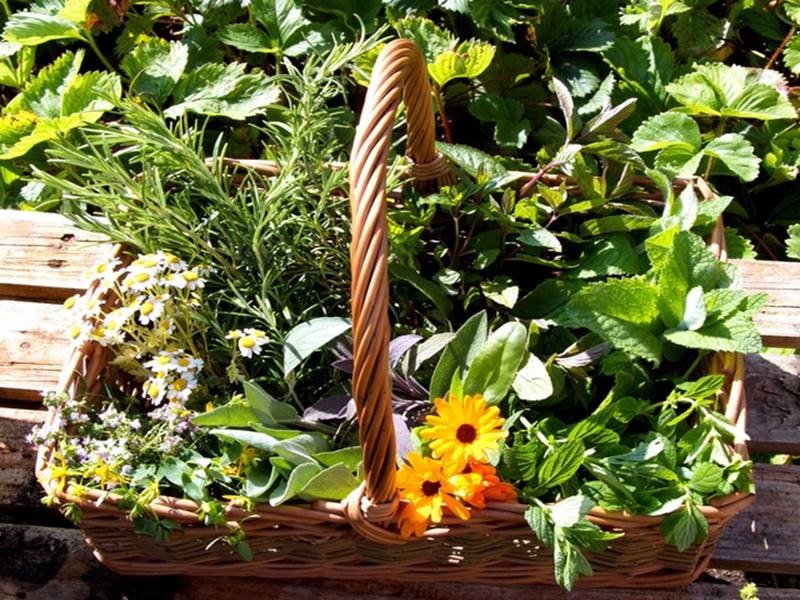
Last month we spoke to Stephanie Hafferty to find out all about no dig gardening, and how you can turn homegrown food into favourite dishes and even natural products for the home. Find out all about what Stephanie does in our interview below.
Our interview with Stephanie Hafferty
1. You are a no-dig kitchen gardener, teacher, writer and chef. How do you tie all of your occupations together?
The different aspects of my work have naturally formed, so they tie together harmoniously.
After leaving university (where I studied English Literature and Art History), I trained as a secondary school teacher but after two years’ teaching in a school in Cambridgeshire realised that it wasn’t the career for me. Whilst exploring other options, I became pregnant with my first child - I have three children (all young adults now) so parenting has been a major theme of the past 23 years.
I’ve always had an interest in growing but this had been mostly limited to pots on windowsills. Having young children increased my desire to grow and cook healthy food, so I started a small garden. The first one was in pots as we only had a tiny paved yard, but moving to a house in Wiltshire with a garden 21 years ago gave me the opportunity to live my ‘Good Life’ dreams and not only have a larger edible garden with fruit and herbs, but also keep ducks and chickens. I moved to my current garden 15 years ago, where I have also been able to get an allotment just up the road. Of course, all of my growing uses organic methods.
I started working as a gardener around 9 years ago, answering an ad for a local market gardener, Charles Dowding, who was needing help. I had no idea of the impact this would have on my life, opening up a whole new gardening experience for me and change of career. There I learned about commercial growing (the garden was around an acre of intensively cropped beds) and no dig gardening - Charles has been growing no dig for 35 years. The skills I learned during the 2 1/2 years I worked there were incredible, it was more like a university education than a job, in many ways. After this, I had the experience and knowledge to branch out on my own. My first independent project was for Niall Hobhouse at the Hadspen Estate. Next, I spent 3 1/2 years running a kitchen garden on a private estate for Cameron Macintosh. My work has featured in publications ranging from The Telegraph to Permaculture Magazine to Gardens Illustrated!
Now, I run a kitchen garden for a local restaurant Roth Bar and Grill at the art gallery, Hauser and Wirth Somerset, and work with Charles growing and running no dig gardening courses, where I specialise in creating large meals from seasonal food we have grown. I also still have my own garden and allotment. Both jobs involve very interesting work, mostly outside in all seasons, meeting a wide range of people. I am so fortunate to have work which is so stimulating and fun. Other work is more home based: writing, blogging, exploring new recipes and potions.
I started writing articles based on my work and growing at home for various magazines around 7 years ago, also contributing to some books. My photographs have been printed in books and many gardening magazines. At the moment I am co-writing a book with Charles which will be published in May 2017.
The experience I had teaching in schools gave me the confidence to accept requests for giving talks and courses; quite a different audience, though! My first talk on no dig gardening at an eco-festival was attended by almost 200 people! I now offer a wide range of talks and workshops - gardening, potions, food - all of them linked to growing sustainably.
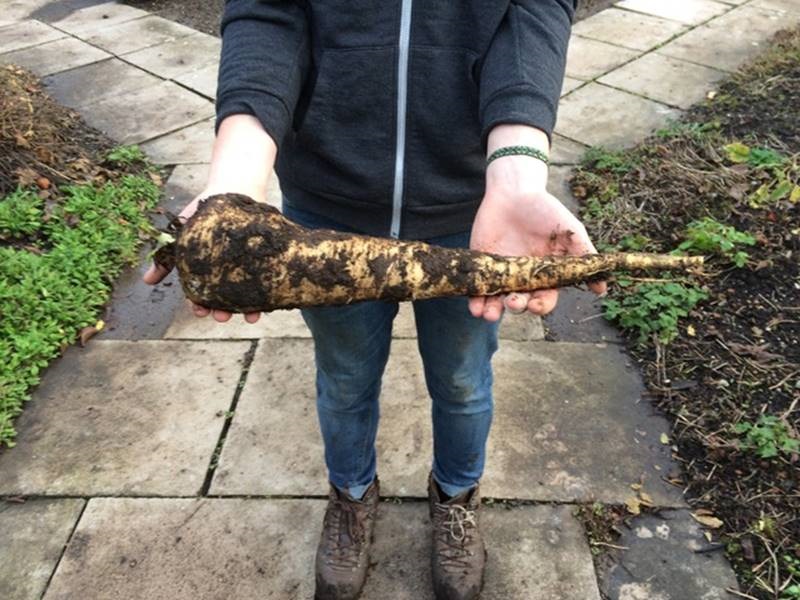
- © Stephanie Hafferty, 2016
2. What does "no dig gardening" involve?
In no dig gardening, we spread a mulch of an inch or two of well-rotted compost on the surface of the beds every year. This feeds the plants and soil life for a whole year: no other feeds are necessary, not even for ‘hungry’ plants. Because the soil is not dug, annual weed seeds are not exposed so it is very easy to keep the plot weed free with regular hoeing. Having a weed free, mulched plot means that you can plant or sow without having to do other preparation and the lack of weeds reduces habitat for slugs and other pests. We keep the paths weed free too.
Charles has been running an experiment for 10 years comparing identically sized beds, fed with the same amount of compost, one of which is dug and the other undug. It takes around 10 minutes to prepare the undug bed, 80 minutes to dig the dug one. All harvests are carefully weighed. Results show that there is absolutely no benefit to the extra 70 minutes of work digging the bed - this year, the dug bed produced 99kg of veg; the undug 109 kg.
No dig is very beneficial for the soil, working with nature to produce abundant crops. Digging destroys mycorrhizal fungi and harms the multitude of soil life. With no dig, the soil life incorporates the surface mulch naturally. The mulch protects the soil, especially useful during dry summers as you do not need to water as much and also provides a habitat for beneficial wildlife including spiders and black beetles.
As the soil is in good condition, you can access it year round, even on heavy clay like my allotment. No dig is easy, saves a lot of time, you have fewer weeds and can grow a huge amount of food.
3. How do you get started with a no dig garden?
That entirely depends on the space you have - no dig is very versatile, you adapt it to your own situation. My allotment was already bare soil as I’d been growing there for a few years (digging!) so I just trowelled out any weeds and spread well-rotted compost on the surface and have never dug again. Each year I apply another inch or so, using the same amount of compost (either homemade or well-rotted manure) as the diggers at my allotment.
If you are starting on grass, you can do this entirely with mulches. The garden I set up at Hadspen was on very weedy pasture, entirely made from mulches on top of the grass, which rots down feeding the plants and soil. You need 6 inches of mulch to kill weeds, or a combination of mulch and another light excluding material - cardboard, polythene.
I helped Charles start the garden at Homeacres on very weedy pasture (including perennials such as bindweed, couch grass, creeping buttercup, dandelions) entirely with mulches. In November it looked like this, after the weeds had been cut down.
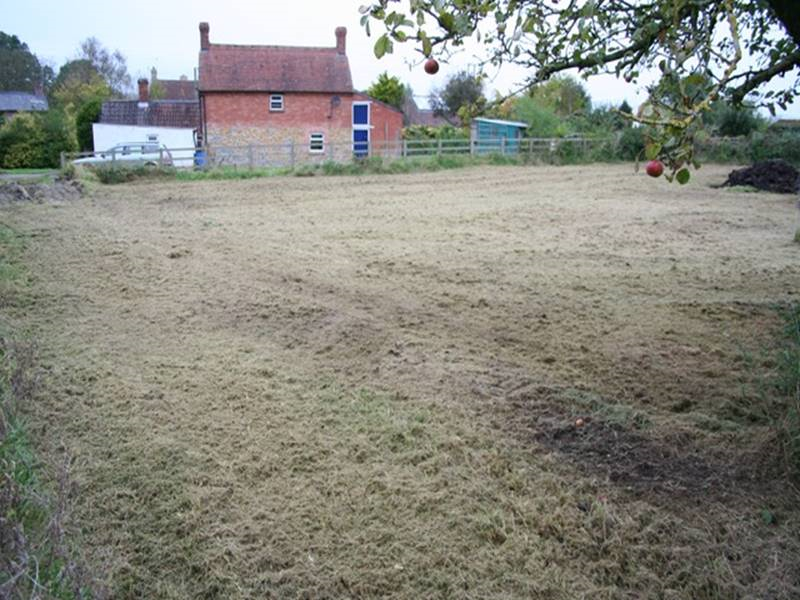
- © Stephanie Hafferty, 2016
In February we were making beds:
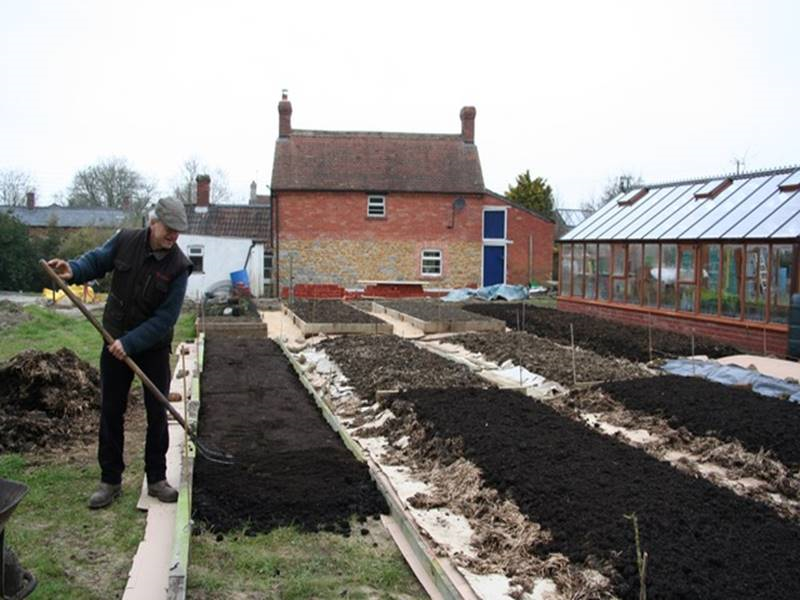
- © Stephanie Hafferty, 2016
And in June, we were already growing enough to supply salad to local shops and restaurants.
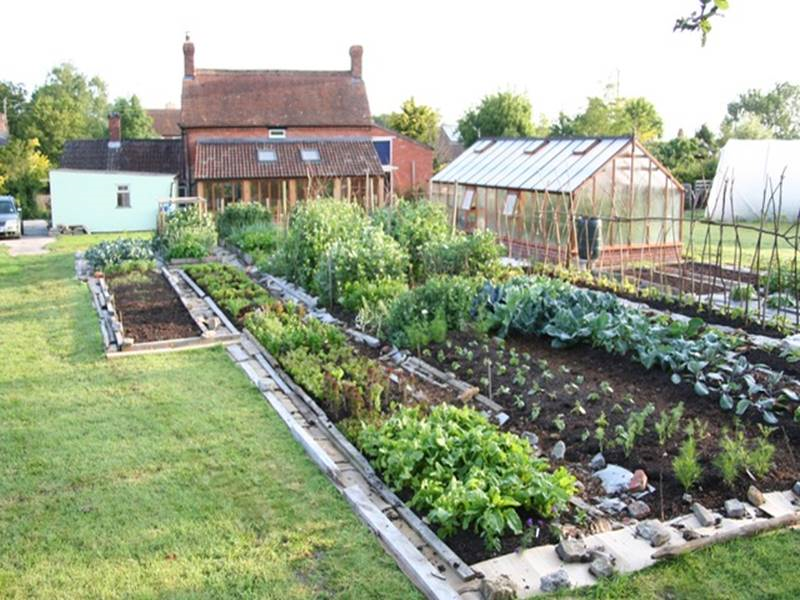
- © Stephanie Hafferty, 2016
The wood in the photo was just to make the beds and weigh the card down which was mulching the paths, then removed. We prefer to not use wooden sides as that can provide shelter for slugs, snails and woodlice.
4. Are there any limits to what you can grow with a no dig garden?
No, except of course the climatic limitations ones everyone has (I can’t grow pineapples on my allotment!)
You can sow parsnips, carrots and radish directly into the surface mulch, even if it is well-rotted cow manure, with no forking.
For potatoes, we add more mulch as they grow on top of the plants.
Sometimes people think no dig means never digging, but of course, you’d dig a hole to plant a tree or use a spade to remove large rocks.
5. As a chef, you make seasonal homegrown food. Do you have a favourite seasonal dish?
The different range of food every season is very exciting, so I don’t have a favourite! Although I am omnivorous, most of the food I make is plant based because that means I can grow almost every ingredient, except olive oil or lemons, things like that. I have had many requests for a recipe book, so this will be my next project.
There are always seasonal tastes I look forward to, one of the key pleasures of growing your own however you chose to garden - the first peas, a sun-warmed cherry tomato, freshly picked raspberries, homegrown aubergines…
6. You also grow plants which can be made into natural products for the garden, home, and body. Are there particular plants you do this with?
The range of plants I use is wide, including those grown at home and also wild plants, foraged for locally, including flowers and herbs. I enjoy making these because they extend the usefulness of the plants I grow, beyond the kitchen. Most of them are beneficial to wildlife too, providing seeds for birds or forage for bees. They smell wonderful and unlike so many chemically produced products, are non-toxic and not harmful to the environment.
Also, making your own potions is very economical, saving a lot of money. I’m a single mum and have found that growing my own as much as I can, home cooked seasonal foods and making these potions has really helped my quite small budget.
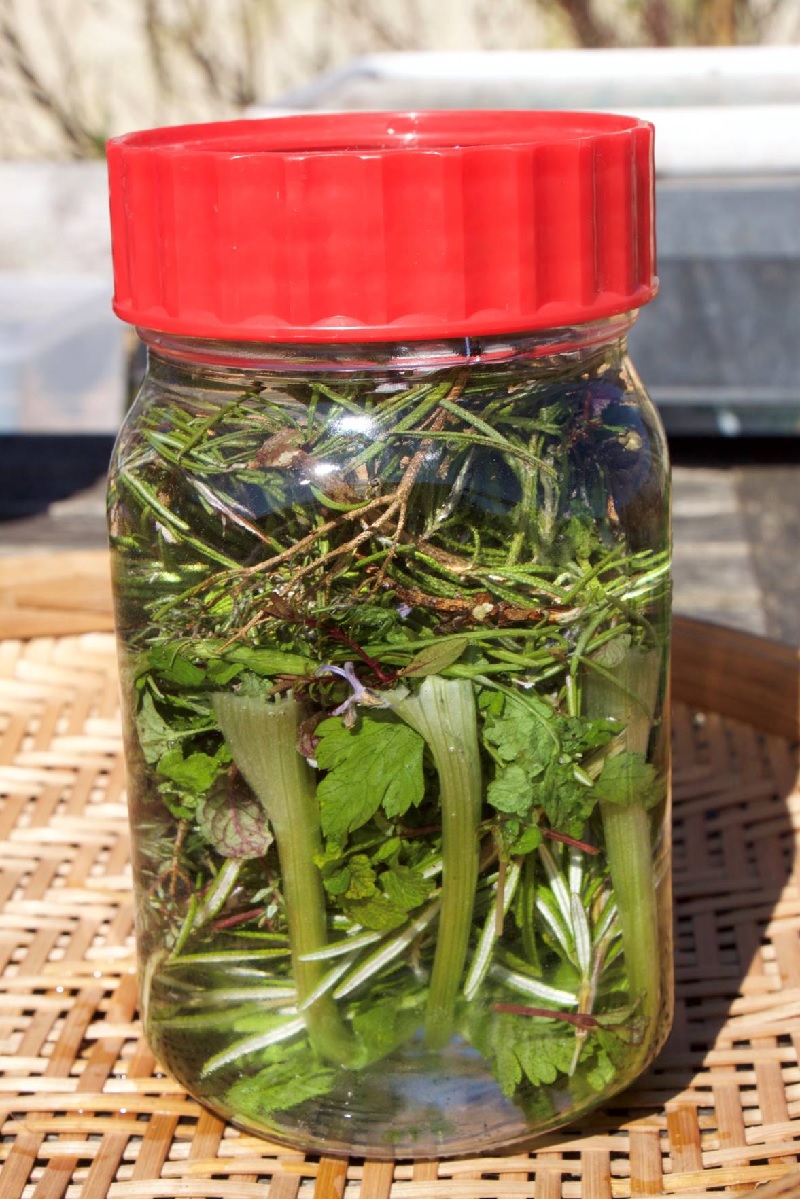
- © Stephanie Hafferty, 2016
7. How do you turn specific plants into natural products for use in the home?
This depends what they are to be made into. The plants are used either fresh or dried, additional ingredients include water, vinegar, oils and even vodka. Some methods are quick, others require several weeks of preparation. You can use interesting recycled bottles and jars to store them; they look very lovely when made.
8. How can these plants also be used for the body?
I use them to make salves, creams, shampoos, bath potions, healing oils - there are many possibilities.
My book, No Dig Home and Garden, is full of detailed recipes for the home, garden and body to inspire you to make some gorgeous potions yourself.
Blog: www.NoDigHome.com
Copyright: Stephanie Hafferty, 2016.




